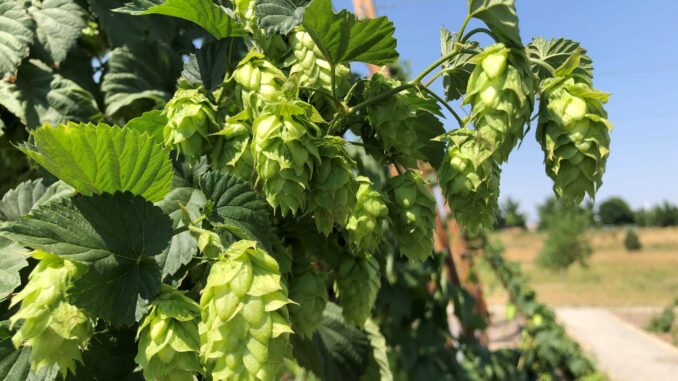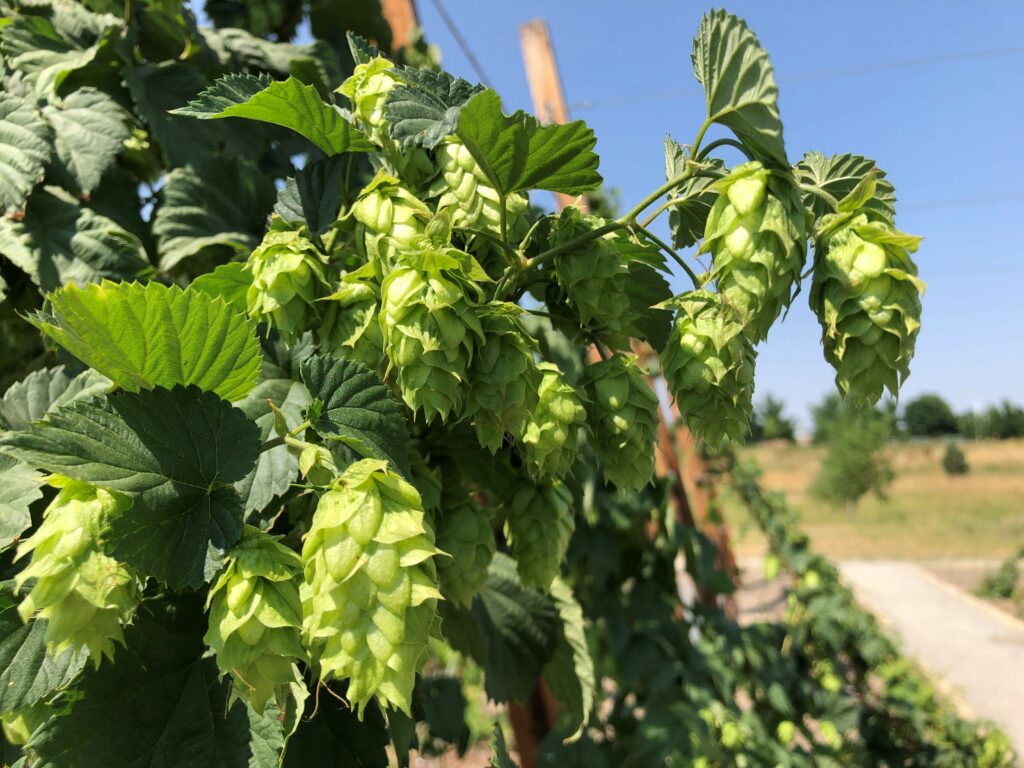
by Selena Kunze, Horticulturist, Gardens on Spring Creek
Whether you are a home brewer, are drawn to the ornamental beauty of the plant or just enjoy the fragrance, hops continue to be popular in home and public gardens alike. Hop plants are a great ornamental climber along fences and pergolas, for shade in a sitting area, or as a privacy screen, and the hops cones add a distinctive flavor and aroma to beer and food.
Hops (Humulus lupulus) are perennial plants that die back to the ground in the fall and come up from the crown of the plant each spring. If you’re looking to add these to your own landscape, you can purchase hop varieties as rhizomes (an underground stem that sends out roots and shoots) or as potted plants from local nurseries or home brew stores. Plant your hops in spring after last frost in a sunny spot in well-draining soil that has been amended with compost. Dig the hole twice as wide as the container, water well after planting, and apply a light mulch to keep weeds down and the soil evenly moist. Once established, hops prefer deep, less frequent watering.
Hop plants can grow to lengths of 25 feet or more and weigh 20+ pounds, so they need a sturdy trellis system to grow on. Space plants far enough apart to keep their side arms from getting tangled with other varieties. Use strong twine as the climbing support for the stems (called bines, not vines). Using a natural and compostable twine makes fall clean up easier.

It is necessary to train your hop plants onto their supporting trellis once they reach two to three years old. After your plant has sprouted in spring, cut the first flush of bines to the ground when they are about a foot tall (but not after May 1st). Once they recover in a few weeks, select three or four of the hardier bines and gently wrap them clockwise around the trellis. Continue to cut untrained hop bines to the ground as they pop up, keeping only the main bines on the trellis. In late spring to early summer, you can apply fertilizer suitable for fruits and vegetables to help provide the nutrients that hops require. Additionally, keeping the bottom three feet of foliage cut off the bines through early summer will help with wind movement through the plant, as well as aid insect and disease control.
If you choose to use your hops for homebrewing, you’ll need to check them regularly for ripeness. They are ready to harvest when they make a papery sound and spring back into shape when pinched between your fingers, usually from mid-August to mid-September, depending on the variety. The lupulin inside the cones will also be bright yellow in color (not light yellow or orange) and have a pungent aroma. Selectively harvest all the cones that are ready from each bine.
To store hops, thoroughly dry the cones and vacuum seal them in one- to two-ounce bags, then freeze. Hops keep for up to two years if air is removed and they stay frozen. Fresh, undried hops should be used within 48 hours.
Support Northern Colorado Journalism
Show your support for North Forty News by helping us produce more content. It's a kind and simple gesture that will help us continue to bring more content to you.
BONUS - Donors get a link in their receipt to sign up for our once-per-week instant text messaging alert. Get your e-copy of North Forty News the moment it is released!
Click to Donate
